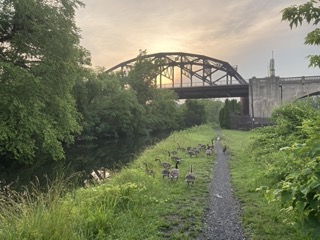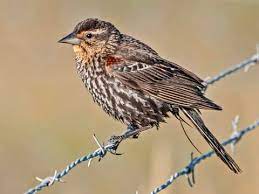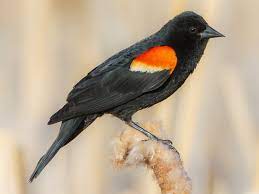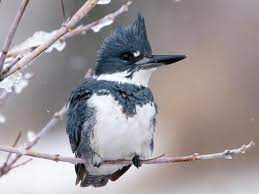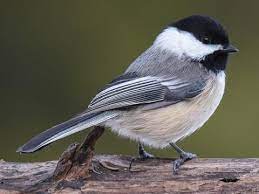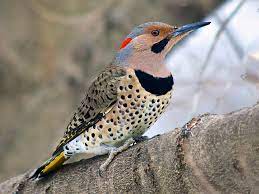The D&L Blog

Biking & Birding on the D&L
Written by Evan Fisher
I discovered Delaware & Lehigh National Heritage Corridor and the D&L Trail during spring of 2020.
Before everything started shutting down, I was at the Wine and Spirits purchasing both. I got in a line that wrapped around the back of the store as “Don’t Stand So Close to Me” by The Police played on the store speakers. I looked around, but no one else seemed to notice the song or think it was as darkly funny as I did. The mask mandate wasn’t in place yet, but it was clear we should be trying to distance ourselves from each other. Everything felt uneasy.
I’d already had an unhealthy relationship with alcohol. As the anxiety of the pandemic spiked, so did my booze consumption. I realized I needed to make a choice–it was one I’d made countless times before but never stuck with, because addiction is a wine-soaked liar. It was time to stop drinking.
Bedtime became 9pm. I woke up rested in a way that my body hadn’t known since some time before college. I would sit outside in the early mornings before virtual work, watching the orange-pink-blue sunrises from my West Bethlehem backyard.
I’d had a black 70s Raleigh tank of a bike in my garage for years. It would have taken granite thighs to take on the Lehigh Valley’s hilly terrain, so I sold it to a man who was planning to use it in blessedly flat New Jersey. I got a cheap teal mountain-ish bike off Craigslist that didn’t shift right, but could tackle an incline.
The Sand Island D&L Trailhead had been closer to my house than I’d ever realized. I knew the short-lived but vital history of the canals and an occasional mule story had been a Morning Call staple for years. The first time I rode the D&L, I stopped at every sign along the way. I could not believe how well maintained the trail was.
Rides quickly became part of my morning routine. I’d wake up at 5am to get to Sand Island. I’d ride as far as I thought I could toward Freemansburg, to what I started thinking of as Red-Winged Blackbird marsh. They’re matte black birds with bright red and yellow shoulder caps–that’s what the males look like, anyway. It wasn’t until much later that I’d learn to distinguish the females from other “brown birds.” They were also one of the first birds I learned how to identify by sound, their buggy-like “waaahh,” signaling it was time to head back.
Eventually I made it to the Grist Mill by the Freemansburg Locktender’s House, then into the woods past the old mule barn. I met Black-Capped Chickadees, Tufted Titmice, and Carolina Wrens. I bought a pair of binoculars that became as necessary as a helmet.
Belted Kingfishers’ creaky call I heard before I ever got to see one. It was hunting from a tree on the canal surveying the water below. They use their chunky bills to grip their aquatic prey as they bash it against a tree limb or rock before eating it whole. Not so this time. It dove like a spear before it returned to its perch, fishless, and that’s when I noticed it lacked the brown belt of the female. For a moment, he sat, then took off creaking toward his next fishing spot.
Soon I was riding Sand Island to Allentown and back daily, and to the Route 33 Boat Launch or Easton on the weekends. Several times these medium-sized birds with white butts flew in front of me as I rode.
To my frustration, they melted into the woods when I’d stop to find them. When I was finally able to spot one, I fell in love: a tan, gray-capped gentleman with a creamy speckled belly, sporting a bright red sunburn on the back of his neck. He had a black bandana on his chest and a mustache to boot. My field guide identified this dapper redneck: a male yellow-shafted Northern Flicker.
The poor teal bike was starting to feel the strain. My family got me a gravel Trek bike for my 30th birthday. I completed a D&L Trail Challenge and over one summer rode 300+ non-consecutive miles on the trail, down past the Easton dam at the Forks of the Delaware and into Bucks County. I met Wood Ducks that could double for oil paintings. I learned to recognize Eastern Kingbirds by their cotton-white dipped tails and discovered where the Green Herons liked to fish. I figured out that Bald Eagles are way more common than you think.
I’ve since moved down to the Philadelphia area but I’ll always be partial to the Lehigh Valley sections. We are fortunate to access a preserved historical marvel that allows us to keep exploring and learning, no matter where we are in eastern PA, and I am fortunate for the change it wrought in my own life. I am a better person than I was before I discovered the trail, and I owe much of that to my experiences on the D&L.
This year, April 27 is Celebrate Trails Day–I’ll see you out there.

